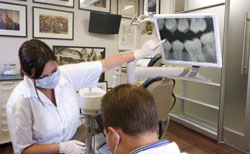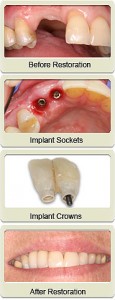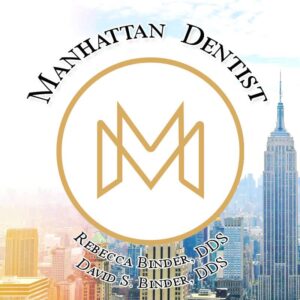
David S. Binder, D.D.S., the “Manhattan Dentist,” uses digital X-ray, implant simulation, and modeling software combined with surgical skills and training to create the result before any treatment begins. Patients can see what their dental implants look like in their mouths and understand the degree of surgery required before any dental treatment begins. Patients can look at their current simile or enhance the dental implants’ shape, color, and alignment to achieve their desired results.
Dr. David Binder is an assistant clinical professor at NYU College of Dentistry. He teaches dental students how to design implant treatment plans from the final restoration backward.
The success of dental implants is well documented today at well over 90%. It’s not whether implants work, but they can achieve both functional and esthetic results that restore hard and soft tissues. The vision of the final implant-supported bridge, denture, and crown should be determined before an implant or implants are placed. A mock-up in wax of the final restoration is used to evaluate face, lip support, smile, speech, and overall esthetics. These prosthetic trials, in conjunction with digital analysis, determine implant placement. Digital treatment planning provides total control for restorative implant success.

The use of digital technologies such as CAT scans or cone beam x-ray scans, Radiographic stents, 3D imaging surgical planning software, surgical guides, and 3D models allow Dr. Binder to better plan a successful treatment result.
Once a final treatment plan is proposed, a CAT scan is analyzed in 1mm 3-dimensional sections to determine the bone quantity and quality for use. In addition, the CAT scan can identify bone grafting needs at this point.
Combining the CAT data and virtual imaging treatment software such as Simplant, the brand and size implants can be placed into site-specific cross-sections of the jaws. As a result, vital structures are identified and avoided.
During the dental implant surgical procedure, this same CAT and software 3D data, digitally fabricated CAD / CAM surgical guides, and stents enable more precise placement of single, multiple dental implants or implant-retained dentures.
In more complex situations, a computer-fabricated actual plastic skull or jaw is made for use as a practice block so the surgery can be taken from the virtual to the real before a patient is touched.
Through these types of digital technologies, the final crowns, dentures, and bridges can be superimposed on the implants along with the opposing arch to evaluate the proposed final restoration.
To learn more about the Manhattan Dentist, Dr. David S. Binder DDS, and Dental Implants, Implant Retained Dentures, and Sedation Dentistry, visit us online at https://www.ManhattanNYDentist.com
To learn more about Dental Implants, visit us online.

Manhattan Dentist
David S. Binder, DDS,
Rebecca Binder, DDS
551 5th Ave., #1114
New York, NY 10176
Tel: (212) 867-2730
https://www.ManhattanNYDentist.com
